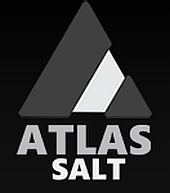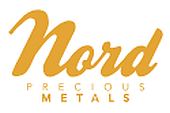 The Most-Lucrative Niche in Cobalt Market
The Most-Lucrative Niche in Cobalt Market
By now, a new phrase (and market) will be on the tip of the tongue of every metals investor: lithium-ion batteries. Along with this comes interest in the metals which are the necessary inputs for this high-tech power source: primarily lithium, cobalt, nickel, manganese, and aluminum.
The reason for this surge in investor interest is simple: the evolution of the electric vehicle market. To be clear, lithium-ion technology has numerous other industrial applications. However, because of the size of the battery required to power an EV and the projected growth-rate for this market, EV’s are expected to be the dominant source of demand for lithium-ion technology for many years to come.
image: http://www.stockhouse.com/getattachment/289d89bc-4a6a-45f6-ac01-c5176d3b690b/American2_bloomberg.png

Here a brief review of the technology is necessary. The “lithium-ion battery” is not a single product. Instead, there are several different chemical compositions of these batteries. In part, this is a process of technological evolution: older chemistries are replaced by newer formulations. In part this is a reflection of different batteries for different uses.
At present, the battery chemistry of choice for EV’s is the “NMC” battery, representing nickel, manganese and cobalt. The precise chemistry for this battery is LiNiMnCoO2 (lithium-nickel-manganese-cobalt-oxide).
image: http://www.stockhouse.com/getattachment/news/newswire/2017/08/22/the-most-lucrative-niche-cobalt-market/American2_batterychemistry4.png?width=450&height=329
One of the companies looking to capitalize on the opportunities to supply inputs for these batteries is American Manganese Inc. (TSX: V.AMY, OTCQB: AMYZF, Forum). However, to explain how AMY is going to capitalize on (revolutionize?) this market requires further education on lithium-ion batteries – and the metals markets themselves.
The chemistry for the NMC battery is only half of the story. Where things really get interesting is in looking at the relative supply of these metals.
Lithium is an abundant metal, which can be harvested in large-scale mining operations. Manganese and aluminum are also abundant metals, also amenable to large-scale mining. Nickel is somewhat less abundant in the Earth’s crust, however large nickel deposits exist which continue to be adequate to meet existing demand. This means future supply can be ramped-up to meet demand.
Cobalt is the exception here.
image: http://www.stockhouse.com/getattachment/572a3380-2a9d-46d7-8d7b-f456a1655a1a/American2_cathodecritical.png
Not only is cobalt a relatively rare metal, but it seldom occurs in sufficient concentrations to support primary cobalt mining. Instead, the vast majority of annual cobalt supply (98%) comes as a byproduct of copper or nickel mining.
This is a problem. It’s a problem for the end users who will need enormous quantities of this relatively rare metal. It’s also a problem for mining companies who would like to fully supply the marketplace with this vital metal.
At current metals prices, there are very few geological formations which could ever support primary cobalt mining. Rather, the only way to currently ramp up the supply of cobalt in any significant way is through finding, developing, and constructing more nickel and copper mines.
This would (will) take many years. More problematic, mining companies are not going to spend a half billion dollars – or more – putting a new copper mine into production just to harvest the small quantities of cobalt which come with it. It would take some fantastic increase in the price of cobalt, to many multiples of the current level ($25+/lb USD), to generate any direct supply response from mining companies.
Many junior “cobalt” companies are looking to add to cobalt supply through re-developing older mining projects for other metals, but which have relatively high levels of cobalt byproducts. This will still take many years, and (as byproduct production) will only add modest quantities of cobalt to total supply.
image: http://www.stockhouse.com/getattachment/a7f12883-83c0-472f-9fba-6aac3cf993c7/American2_cobaltdynamics.png
What other options are there? Larry Reaugh, President and CEO of American Manganese, has the answer to that question: recycle these lithium-ion batteries, and recover the metals that are presently being consumed – and wasted.
Sure. Anyone can say “go out and recycle cobalt” in order to meet spiraling demand for a commodity in short supply. What makes AMY stand out in the marketplace is that the Company isn’t merely talking about recycling (of cobalt, and other metals). American Manganese has produced a revolutionary process to actually solve this problem (patent application pending).
Regular Stockhouse readers are already somewhat familiar with this Company from a previous feature article from last year (American Manganese: The miner that became a tech company). As its name implies, AMY is a mining company.
Here many investors new to the Company may be confused. How does a mining company suddenly end up as “a tech company”, boasting industry-leading recycling technology? It’s a product of an old expression: necessity is the mother of invention.
American Manganese’s flagship property is its Artillery Peak Project in Arizona, the U.S.’s largest manganese resource. However, falling manganese prices meant that given the existing technology for the processing of manganese, Artillery Peak was not currently economic for commercial development.
Management’s response? Develop better technology for manganese extraction.
Through AMY’s research partner, Kemetco Research, the Company developed a superior, proprietary process for the extraction of manganese. Unfortunately, with manganese prices continuing to decline, even this efficiency gain was not sufficient to attract financing for Artillery Peak.
image: http://www.stockhouse.com/getattachment/a5800f4f-c6c9-4425-ace7-48cea80e3112/American2_artillerypeak.png
It was here where AMY and Kemetco Research made a startling discovery that was not only a game-changer for American Manganese. It could be a game-changer for the future of the entire lithium-ion battery industry. This same technology could be adapted to be ideally suited for the recycling of lithium-ion batteries.
AMY didn’t invent the idea of recycling lithium-ion batteries. Everyone agrees that this is a good idea and should be a high priority. The problem is that existing recycling technology is entirely inadequate for this huge task.
Most parts of a lithium-ion battery can be recycled with an acceptable level of efficiency. The exception to this is the battery cathode. But it is an enormous exception. The cathode of the lithium-ion battery comprises (by far) the greatest amounts of these green metals – like cobalt – which the battery-makers want and need to recycle.
image: http://www.stockhouse.com/getattachment/0578737b-c69c-45fe-8cfd-5b79db1ca20f/American2_problem.png
American Manganese’s proprietary technology for recycling lithium-ion batteries is geared towards only the recycling of battery cathodes. However, this still fails to capture how and why AMY’s recycling technology could literally be the salvation for the EV industry – and the lithium-ion battery industry, as a whole.
The Company’s recycling technology can extract 100% of all of the valuable metals contained in these battery cathodes. That’s not a theory. That’s not an assertion. This is what American Manganese has demonstrated in its increasingly successful testing of this technology.
That is efficiency. And it is precisely what is required in a world that will soon be starving for new sources of cobalt.
image: http://www.stockhouse.com/getattachment/ccbad046-2e12-4fb5-b5e0-3e153526e5ae/American2_recycling3.jpg
Here is where the dynamics for this market become very interesting for investors. As cobalt moves rapidly toward a supply deficit, the price for cobalt will not only continue to rise, it will likely accelerate.
Supply and demand. A rising price for cobalt is the market’s way of attempting to stimulate more cobalt mine production. But recycling is a secondary source of supply. No matter how cheaply AMY can recycle cobalt from battery cathodes, the price for cobalt will keep going up.
That spells rising margins on any cobalt-recycling operation – with no end in sight. The only factor which could reverse this dynamic is if there became a global glut for cobalt, a possibility not presently visible on the most distant horizon.
For environmentally-minded investors, AMY’s technology is also about helping to save the planet. To start with, recycling any metal creates a smaller “footprint” than mining the same metal out of the Earth. However, as noted, current battery-recycling technology is grossly inadequate. With no effective way to recover metals from battery cathodes, these cathodes have simply been sent to metals smelters and burned – maximum pollution, limited recycling.
image: http://www.stockhouse.com/getattachment/3cd4e52a-8c31-4ef0-9de7-2135cc287b53/American2_corporateobjective-(1).png
For most AMY investors, their primary motivation remains profit. With this stellar technology, in a marketplace crying out for precisely such an innovation, the key to unlocking shareholder value in this revolutionary breakthrough is an optimal strategy. Here management has been carefully considering the Company’s options.
- License the technology
- Find a JV partner with whom to construct a battery-recycling facility
- Seek to finance its own facility
Options (1) and (2) are both potentially acceptable to AMY, providing such an arrangement was on terms which allowed the Company’s shareholders to maximize their return on such a venture. Management remains vigilant for such opportunities. Indeed, if a partner is found, American Manganese estimates recycling operations could commence in as little as 18 months.
Originally, American Manganese was ruling out the third option. Here it is important for investors to understand that (by far) the largest component of cap-ex required to construct such a facility is not with respect to the recycling infrastructure itself. Instead, the heaviest cost component is the disassembly plant required to break down these batteries for recycling.
As has been a trademark with the Company, management has come up with an even better option: utilize this revolutionary technology by itself for the recycling of cobalt and other cathode materials, but without the need to construct a (costly) disassembly facility.
How? In a word: scrap – scrap cobalt. The only current option for eliminating used battery cathodes is to incinerate them in a smelter.
With this method of disposal being highly inefficient and heavily polluting, much of this cathode material – including the rare/valuable cobalt – is simply being funneled into junkyards, as scrap. Through the Company’s diligence, management has been able to identify substantial quantities of scrap cobalt.
This is not just some nickel-and-dime operation. AMY estimates10% scraps could recover above 4,000 tonnes of scrap cobalt and other cathode metals, available for processing each year.
image: http://www.stockhouse.com/getattachment/4542663c-663a-45d3-8305-6ec6a632dabe/American2_marketsize.png
The off-take from such cobalt recycling would yield roughly $230 million in revenues for cobalt (at current cobalt prices) and does not include the other cathode metals. That is the revenue potential which exists even before the Company is able to progress to a battery disassembly facility.
How does this manganese mining company reach this pot-of-gold in cobalt recycling? It starts with a pilot plant. Then management is currently planning a commercial facility which can process scrap at a rate of roughly 35 tpd’s (tonnes per day). Capital costs would be a small fraction of what is required for a full recycling/disassembly operation.
Once a 35-tpd commercial pilot plant for scrap processing is in operation and generating a revenue stream, then American Manganese will start designing and planning for a disassembly plant.
image: http://www.stockhouse.com/getattachment/a1a25d67-c72d-4083-aa06-e9ac7c63c882/American2_milestones2.png
In the meantime, mining investors can’t forget about AMY’s literal mountain of manganese: Artillery Peak. The U.S. Department of Defense continues to list manganese as “a strategic metal” because of its many/important industrial uses.
For investors purely focused on lithium-ion batteries, one of the chemistry formulations already patented is a lithium-manganese dioxide battery (LiMnO2) which uses 61% manganese. With the global supply of cobalt so tenuous, battery-makers for the EV market have a strong incentive to attempt to substitute more (cheaper) manganese in place of rare/expensive cobalt.
To help unlock the latent value of Artillery Peak, management is already contemplating a spin-out. Either the recycling operations or the manganese, Rocher Deboule Cobalt and RareEarth Mining Project’s would be spun-out, providing investors with a more transparent means of valuing the recycling and the mining assets separately.
For investors looking for even more icing on the cake, AMY recently showed it could successfully use these recycled cathode materials to manufacture new batteries. Today: lithium-ion battery recycling. Tomorrow: sales of cathode metals
Bet on cobalt? It’s a rare metal where the mining industry will be very hard-pressed to meet future demand. Bet on manganese? This extremely versatile cheaper metal offers excellent future upside potential.
Either way, investors may want to bet on American Manganese – the mining company with a track record of using innovation and ingenuity to overcome obstacles.
FULL DISCLOSURE: American Manganese Inc is a paid client of Stockhouse Publishing.
http://americanmanganeseinc.com/news-publications-2/press-releases-2/







.png)

































